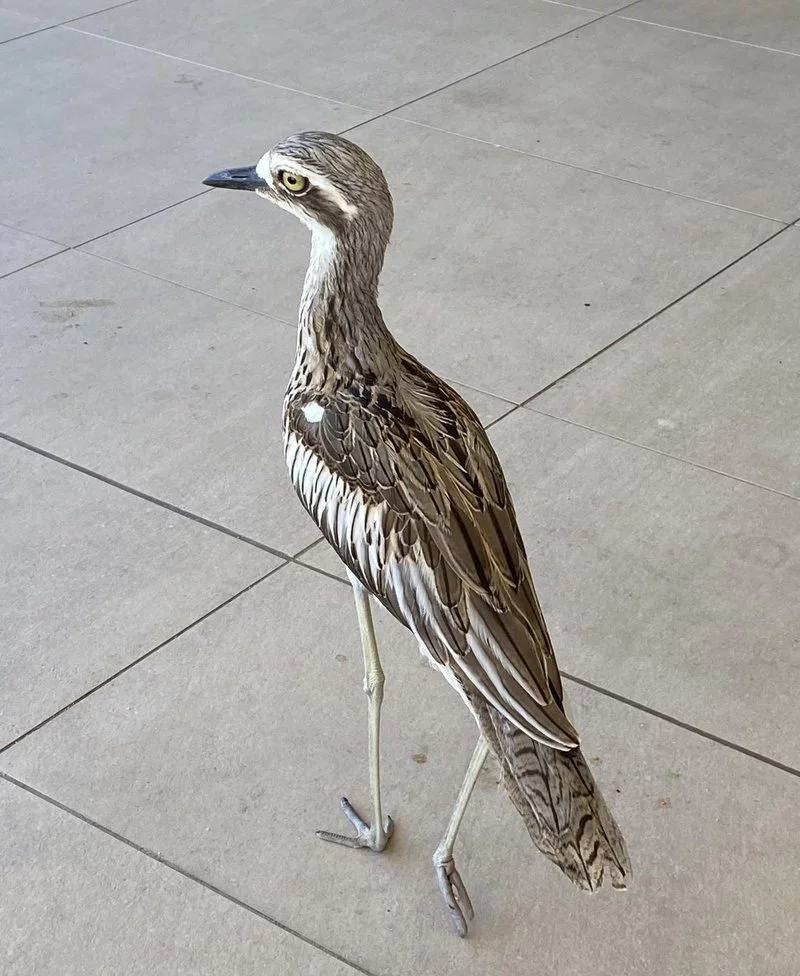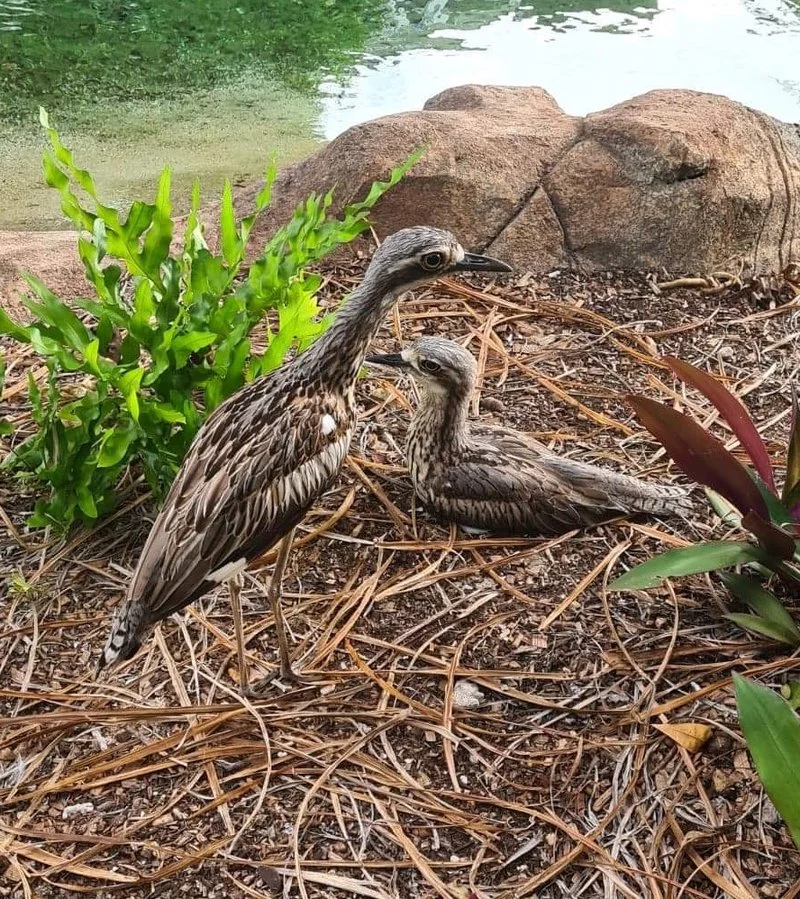Stone curlews are medium to large sized ground dwelling birds which can be found across temperate
and tropical regions of the world including parts of Africa, Asia, Australia, New Guinea, and the
Solomon islands. Of the nine species in the stone curlew family, two can be found here in the
Whitsundays. The beach stone curlew, also known as the beach-thick knee and the bush stone curlew
or bush thick-knee. The bush stone curlew is the most commonly sighted in the region, both on the
mainland and on the islands.
These two species are quite similar in appearance physically, both having long slender legs with
thick, prominent knee joints. They also grow to a similar size reaching from 50-60 centimetres in
length, weighing approximately 1 kilogram and having a wingspan of about 1 meter. Perhaps the
best way to tell them apart is by the colouring of their plumage. The bush stone curlew has
mostly brown, sometimes grey, feathers on top which are streaked with black and reddish-brown.
The underside is a cream colour and also has black streaks. Their beaks are black and they have
large yellow eyes with a distinctive strip of white above them which gives the appearance of an
eyebrow. The Beach stone curlew has a less mottled appearance. The plumage on the upper side is
greyish-brown with turns to dark brown and black over the head and face, there is also a white
stripe that extends from the eye down to the base of the neck. The base of the wings is dark
brown with two vertical white stripes and then fading to lighter grey-brown on the flight
feathers. White feathers cover the belly. The beak of the beach stone curlew is also slightly
larger than that of the bush stone curlew and starts as yellow at the base and then changes to
black at the tip.

The beach stone curlew is only found along the coast and prefers to inhabit beaches, mangroves, estuaries and tidal mudflats. The intertidal nature of their preferred habitat provides them with their food. At low tide the birds will forage through the sand and mud flats to find small marine invertebrates such as crabs and molluscs. They will also nest in these intertidal environments, selecting a site just above the high tide level, these birds like other ground dwelling birds do not build a physical nest. On the other hand the bush stone curlew has a larger habitat range. They can be found in eucalyptus woodlands, grassland, arid scrubland, around inland water bodies and even in urban environments. They also ahem. Larger variety in their diet, feeding on insects, small amphibians such as frogs, molluscs, crustaceans, snakes, lizards and even small mammals. Just like their beach cousins the bush stone curlews will also select a nest site on the ground to lay eggs.

Both species are largely nocturnal and will be most active in the evening and night. However they are both more likely to be heard than seen. These species are known for their loud calls. The bush stone curlew call can be described as more of a wailing scream. Eerily similar to a human, it takes the form of a wee-loo sound which finishes louder and at a higher pitch on the “loo”. This sound is quite haunting, especially at night where it sets a very eerie atmosphere when everything else is silent. The beach stone curlew has a similar call although it has a slightly higher pitch and can be more shrill. When threatened these birds also have the ability to make a hissing sound while spreading their wings in an attempt to scare off the threat. The haunting calls of these birds have led to the stone curlews being associated with death and bringers of grave warnings in many indigenous cultures and stories across Australia.
The bush stone curlew can be seen quite regularly around downtown Airlie Beach and around many of the resorts on the islands. Due to their close proximity to humans these birds are not too bothered by our presence, however if you get too close of their liking you may be on the receiving end of one of those harsh warning hisses. One of the best places to spot the less common beach stone curlew is on Whitehaven beach, and many other more secluded beaches around the islands. It is important to give these birds some space as they are quite secretive, shy and extremely vulnerable to disturbances, particularly when nesting.



